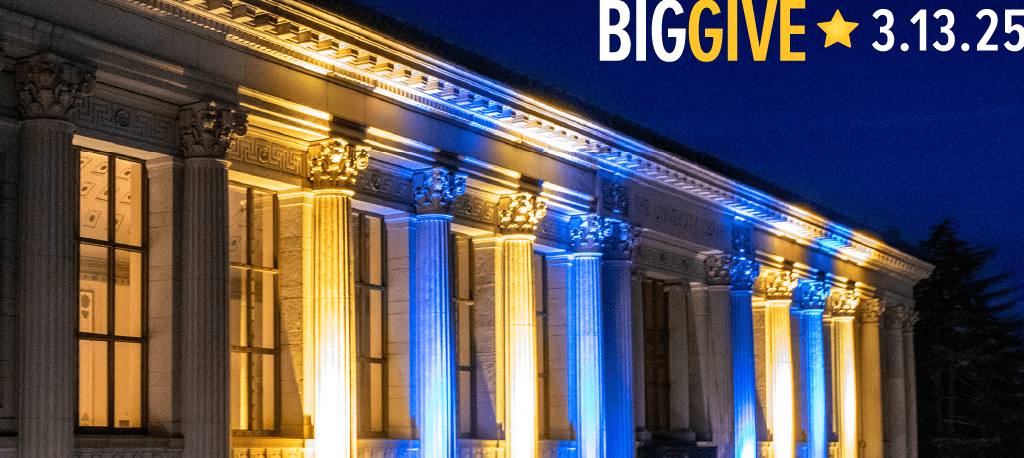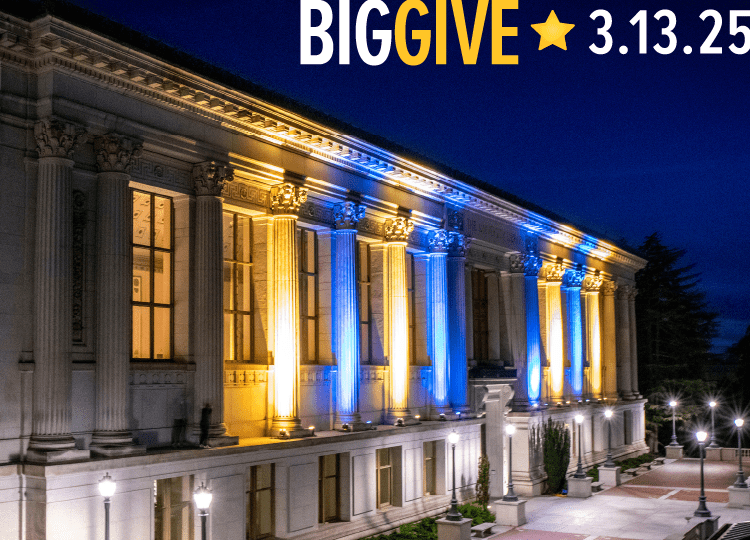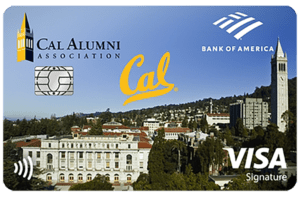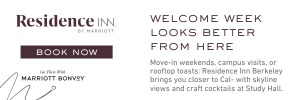Class Notes
Submit a Class NoteRecent Highlights


Clay Cone ’82 writes: Ode to Ned and Jack Against Stanford University, even the Guanos (Cal’s third and fourth rugby teams) had an important part to play: to begin a three-game same-day Big Game sweep with a victory in the first game of the day . . . in 1982, played at the old California […]
-
Class of 2011 Jose Hernandez Diaz
Jose Hernandez Diaz ’11 has published a new poetry book, Portrait of the Artist as a Brown Man, winner of the Benjamin Saltman Award, with Red Hen Press.
-
Class of 2009 Nadia Shihab
Filmmaker Nadia Shihab, MCP ’09, MFA ’21, was awarded a 2025 Guggenheim Fellowship in the Creative Arts (Film/Video).
-
Class of 1971 Steven Hendlin
Steven J. Hendlin ’71 has been practicing psychotherapy as a licensed clinical psychologist in Newport Beach, California, for the last 50 years. He continues seeing patients both in his office and online at age 76. At Berkeley, he was distracted by but immersed in the political, counter-cultural, and social activities taking place, including sitting in […]

David Fuller ’53, J.D. ’56, writes: “I have to thank my older Brother, Everett (Bud) E. Fuller ’45 for sponsoring me as a Sigma Phi Pledge, thus enabling me to enjoy seven years as a Cal fraternity member from 1949 to 1956, and provide a very exciting and fulfilling college experience. Cal at that time was already a premier University, and Berkeley was a great place to live. WWII had...

Joseph Godlewski ’15 published his newest book The Architecture of the Bight of Biafra: Spatial Entanglements with Routledge Press. Based on fieldwork and archival research conducted during his time at Cal, the book examines the intersection of race and the built environment in the region now known as southeastern Nigeria. Enmeshed in the history of slavery, colonialism, and the modern...

Susan T. Ye ’07, an attorney in the San Jose office of Littler, the world’s largest employment and labor law practice representing management, has been elevated to shareholder, effective January 1, 2025. Across its U.S., Mexico and Singapore offices, the firm elevated 28 attorneys to shareholder status. Ye’s practice focuses on representing and advising employers and managers in a broad...

Christina G. Cordoza ’85, an attorney in the Walnut Creek office of Littler, the world’s largest employment and labor law practice representing management, has been elevated to shareholder, effective January 1, 2025. Across its U.S., Mexico and Singapore offices, the firm elevated 28 attorneys to shareholder status. Cordoza is a trusted legal adviser to business owners, in-house counsel, and...

Miller Nash welcome Jessica Bernardini, M.S. ’07, to the firm’s environmental team. Bernardini, based in the firm’s Portland office, focuses her practice on providing clients with regulatory advice and representation in energy and environmental law matters. “I’m excited about joining Miller Nash,” says Bernardini. “It’s evident that I have the support of knowledgeable and...

Arnold & Porter has elevated Co-Managing Partner Ellen Kaye Fleishhacker, a distinguished UC Berkeley alum, to Global Co-Chair of the firm. Ellen graduated from the Berkeley Law/Haas JD/MBA program in 1996 and earned her B.A. in History from UC Berkeley in 1989—with high honors and Phi Beta Kappa. At Berkeley Law, she served as Managing Editor of the California Law Review. Now a partner in...

Jate Samathivathanachai '01 joined Mammoth Biosciences as Senior Vice President of Finance in February 2025. Mammoth is a Berkeley-affiliated biotechnology company focused on leveraging its proprietary ultracompact CRISPR systems to develop potential long-term curative therapies for patients with life-threatening and debilitating diseases.

Epic Universe, the first major theme park to be built in the United States in 25 years opens on May 22, 2025. Steve Tatham ’83 is the executive creative director for Universal Creative of the project. In his role, he leads the creative team and is responsible for all creative execution. His role is define as being the voice and the vision of the project. His role is to ensure that the team...

Russell J. Smith ’09 has been elevated to partner, effective January 1, 2025, at the Boston law firm of Casner & Edwards.
Smith specializes in fiduciary litigation, including probate matters, guardianships, conservatorships, will contests, actions to remove personal representatives and trustees, and complaints in equity. Additionally, he has been appointed by the Probate and Family Court...

Margaret Morganroth Gullette, M.A. '64, internationally known as an age critic and author of prize-winning books about ageism, has just published American Eldercide: How It Happened, How to Prevent It (2024). The University of Chicago Press has nominated it for a Pulitzer Prize and a National Book Award, among others. Katherine S. Newman, Provost and Executive VP of Academic Affairs of the...


Sr. NV Judge Larry Sage ’68 was nominated as one of the 60 "Courageous Judges" by The National Judicial College. The nomination reads: "Retired Judge of the Sparks (Nevada) Municipal Court: Decorated Army veteran who helped create Nevada’s first limited jurisdiction Court on Alcohol & Other Drug Court and the first Native American Driving Under the Influence Victim Impact Panel for the...

Cameron Walker ’99 published her debut short story collection, How to Capture Carbon, with What Books Press in October 2024. She is the author of the children’s book National Monuments of the U.S.A. (a School Library Journal Best Book of the Year), and of the essay collection Points of Light: Curious Essays on Science, Nature, and Other Wonders Along the Pacific Coast. Her writing has...















